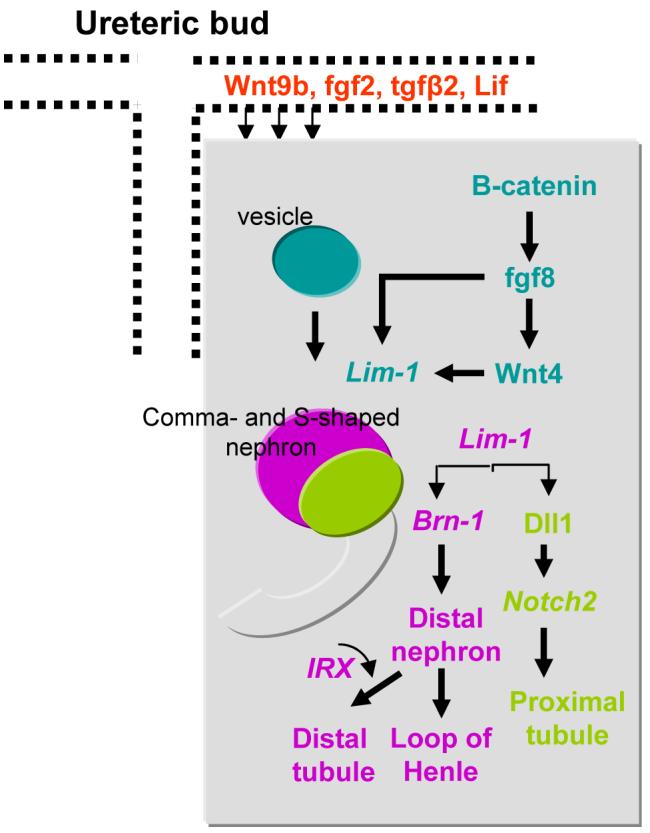Figure 1.

Transcriptional pathways which regulate the formation of the renal vesicle and its transition to the segmented early nephron. Wnt9b is synthesized and released from the ureteric bud branches. Wnt9b in cooperation with inducing factors (e.g., LIF, FGF2, TGFβ2) converge on β-catenin signaling to stimulate mesenchyme-epithelium transition and subsequently the conversion of the renal vesicle (blue) to comma- and S-shaped bodies (pink/green/grey). The transcription factor Lim-1 promotes further patterning by stimulating expression Brn1 (pink) and Dll1 (green). Brn1 in cooperation with Iroquois transcription factors IRX specify distal nephron fate, whereas Dll1-Notch2 signaling specifies the proximal tubule fate. Data presented in this figure summarizes results published in the following articles: Dev Cell 9: 283-292, 2005; Development 132: 2809-2823, 2005; Dev Biol 297: 103-117, 2006; Development 134: 801-811, 2007; Development 130: 4751-4759, 2003; Genes Dev 21: 2358-2370, 2007.
